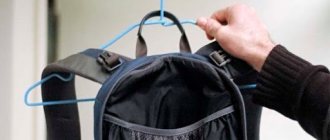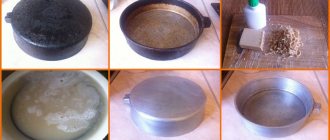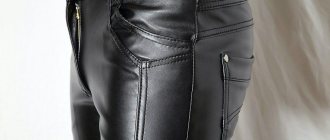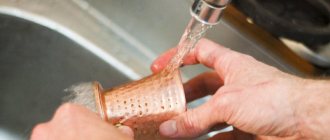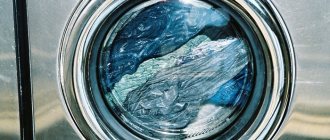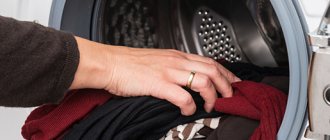Your favorite accessory is dirty! And it seems that he can no longer return to his former appearance. But it turns out that there are ways to clean a backpack made of different materials from any stains and dirt. You will receive all the tools, learn all the secrets to wash your item and keep it beautiful and functional for a long time.
You will learn from our article how to wash a backpack in a washing machine or by hand, where to dry it without damaging the fabric and shape. Tips for caring for a fashion accessory will help you keep it in order and use your favorite item for as long as possible.
Preparing the product for washing
All information about caring for the backpack is indicated on a special label. It is usually located inside a large compartment on one side. Manufacturers do not recommend washing products more than 1-2 times a year. Most backpacks are impregnated with a water-repellent substance. It gets washed out during washing.
Before you clean a hard frame school backpack yourself, like any other model, you need to properly prepare it. Make sure that there are no things in it, carefully check each compartment and pockets. If any items are left inside, they may damage the surface of the fabric during washing. Particular attention should be paid to sticky and inky objects (ballpoint pens, markers, felt-tip pens, plasticine, glue, chewing gum). When in contact with water they leave large stains. It is difficult to remove them even with the help of chemical solutions.
Before you start washing, you need to remove all old stains and stains:
- wet a soft cloth with water;
- Use light pressure to wipe off dirt;
- If the material of the product is rough, you can use the rough side of a sponge or a clothes brush.
The most contaminated places are folds, seams, and pocket areas. This is where crumbs and dust accumulate. They need to be cleaned with a vacuum cleaner. If the stains are difficult to remove, then you need to apply a stain remover to them before washing.
Before washing a backpack with or without an orthopedic back, you should remove all detachable elements (straps, carabiners, pockets, accessories). Orthopedic models have special compartments for the back. They must be removed before the product is soaked. During washing, such a frame is deformed.
Check all pockets and compartments
Remove dirt with a damp cloth, trim threads
Disinfecting a backpack
To treat the product against fungus, use disinfectant sprays or wipes in ready-made form. When choosing a disinfectant, be sure to consider the activity of the active substance. It may have: fungicidal, bactericidal, virucidal, tuberculocidal or other effects. Based on your needs: since sports items can become a source of fungus, choose a fungicidal agent. The method of use will be indicated in the instructions: wiping, irrigation, soaking or another.
Selecting a detergent
Depending on whether the backpack can be washed in a washing machine, as well as other factors, the detergent is selected. Three substances are used:
- Washing powder – great for fabric backpacks. During washing, it produces a lot of foam; microgranules effectively clean the surface. Suitable for hand washing.
- Liquid gel - this option is good for synthetic materials. The detergent is easily washed out of the fabric with water, so the product does not need to be rinsed additionally after washing. Typically used for washing in an automatic washing machine.
- Capsules – intended for products made from natural materials. These products do not contain aggressive cleaning elements such as phosphates. They preserve the structure and color of the fabric.
You can wash the briefcase in the washing machine using both liquid and dry detergents. But liquid-based household chemicals still cope better with stains. Such products penetrate deeply into the material, cleansing the fabric from the inside. Do not use powders with bleaching properties. The end result can be a product with wavy bleached spots.
Washing capsules work on the same principle as liquid detergents. The following powder manufacturers are suitable for cleaning backpacks: Vizir, Ariel, Bon, Dash.
The price category of detergents is varied. For natural fabrics, you should choose gentle cleaners. Their average price is 1000–1500 rubles per pack. A budget option is considered to be a liquid solution for membrane products, the cost is 250–400 rubles. The price of capsules is 500–700 rubles per package. This is the most convenient option; you do not need to calculate the dosage of the substance. Washing powder for backpacks will cost 700–1000 rubles.
Drying Features
You need to dry your backpack correctly. General recommendations to follow:
- Do not wring items made from delicate fabrics or with a rigid frame. If the bag is completely fabric, then wrap it in a terry towel and gently press it so that it absorbs excess water.
- Do not expose the fabric to direct sunlight.
- The product should not be hung on heating devices or near heat sources.
- Depending on weather conditions, the backpack is dried either in a heated room with a normal level of humidity, or on the balcony.
- The product should not be hung, as unsightly creases may appear on it. It is better to place the backpack on a flat surface, having first spread a terry towel or other fabric on it.
To make the product dry faster, you can blow it with a hairdryer. However, the air stream must be cool; the device should not be switched to hot mode. Another option is to use a fan that is directed at the damp cloth.
The accessory should not be put away for storage immediately after drying. It is kept in the open air for several days. If you wrap the product in plastic or put it in a closet, unevaporated moisture can rot, leading to mold and an unpleasant odor.
Washing methods
You can wash your backpack in two ways: in the machine or manually. With the first option, you need to make sure whether the briefcase can be washed in a washing machine. This information is indicated on the label (a special icon in the form of a square with a circle inside). Automatic washing has many nuances, so before you start, you need to read the product care instructions.
In the washing machine
Many housewives are interested in whether backpacks can be washed in a washing machine. To avoid damaging the product, you need to make sure that the bag can be mechanically cleaned. Suitable for machine wash:
- backpacks made of synthetic materials;
- backpacks;
- portfolios;
- tourist and school models.
Before washing a briefcase with an orthopedic back, you need to remove the rigid frame elements from it, otherwise they may become deformed. To prevent the material from tearing during washing, it must be placed in a special bag. You can use a plain white pillowcase instead. Process:
- The bag with the knapsack is placed in the drum.
- The parameters set on the control panel of the washing machine are: temperature 30–40 degrees Celsius, “delicate wash without spin” mode.
- After washing, the product is removed and hung above the bathtub to drain off excess moisture.
If the backpack has a metal or plastic frame, it cannot be cleaned by machine washing. This may damage it. The same goes for bags with protective fabric impregnation.
Manual
Products made from natural materials cannot be machine washed, so it will be useful to know how to wash a backpack by hand. The entire process is carried out in a basin or bathtub, with a water temperature of 25–30 degrees Celsius. If you use hot water, the fabric may fade or shrink in size.
You should choose detergents without additives or dyes. Cleaning a school backpack at home with a powder containing a chemical composition can damage the structure of the fabric. After improper washing, the surface of the product may lose its water-repellent properties. In order for stains to be washed off better, they need to be soaked in water for 2-3 hours.
How to clean your backpack manually:
- Water is poured into the basin, powder is added, and the backpack is immersed.
- Contaminated areas are cleaned with a brush. If the item is made of delicate material, a sponge is used instead of a brush.
- Then the backpack needs to be rinsed in clean water to get rid of the soap.
- It is not recommended to squeeze the product by hand. It needs to be hung on a rope or pipe. All the liquid will flow down on its own.
- To speed up the drying process of the material, wrap it with a dry towel. It will absorb excess moisture.
Washing a travel backpack is a little different from cleaning other models. A hiking bag is subject to special contamination. Therefore, it needs to be treated with “stronger” cleaning powders, for example Woolite. It contains more surfactant elements. Thanks to this, dirty places are cleaned more effectively.
Our tips for washing a backpack in the washing machine - automatic
To wash your backpack less often, you need to follow a few simple rules.
- First. Purchase products made from quality materials. They will last longer and will not look worse after washing.
- Second. Do not place your bag on the floor. This will make the product more dirty.
- Third. If you need to put dirty things in your backpack, they should first be placed in a bag.
- Fourth. A bag is not a place to collect garbage. Therefore, it must be immediately thrown into the trash bin so that it does not stain the backpack.
- Fifth. If dirt gets on the fabric, it is recommended to immediately wipe it with a damp cloth.
Removing stains
As a result of long-term use, stains and stains appear on the fabric. Before you wash a leather backpack or fabric item yourself, you need to remove all dirt. To do this, you should choose a stain remover. They are all divided into 3 types:
- Sorbents - this option is suitable for products made from natural materials. When they come into contact with contaminants, active elements destroy them from the inside. In this case, the structure of the material is not disturbed.
- Solvents – intended for synthetic fabrics. They contain alcohol, so they are effective against grease and ink.
- Oxygen-containing stain removers - suitable for removing stains on colored materials.
Information about whether a product can be treated with a certain type of stain remover is indicated on the label. The icon looks like an oval with the letter “A” inside.
It is not recommended to use chlorine-containing products. They destroy the fabric structure, leaving streaks.
For people of color
For synthetics
For cleaning natural fabrics
Grease and heavy soiling
Grease stains and dirt are removed using organic tinctures. The material is treated with alcohol or acetone for 10–15 minutes. It is not recommended to use such a solution before washing the backpack in an automatic washing machine. During washing, the treated material may deteriorate.
There are several options for cleaning fabrics without alcohol:
- Laundry soap is applied to the surface of the stain. After 30 minutes, clean with a brush. If the fat has not disappeared, the procedure is repeated.
- The dirty area is rubbed with wet salt. After 10 minutes, rinse with water. This procedure is done 2-3 times.
- Old stains can be cleaned with talc. Using a brush, it is rubbed into the stain area. It will disappear within 5-7 minutes.
- Prepare a soap solution based on dish detergent. To do this, dilute 70 g of gel in 500 ml of warm water. The fat is rubbed off with a solution that must be left on the fabric and held for 15 minutes. If the spots have not disappeared, the procedure is repeated 2-3 times.
Alcohol based methods:
- Dilute one teaspoon of salt in 40 ml of ammonia. Then the area of contamination is treated with this solution. After 1 hour, wash off with clean water.
- A starch solution is prepared. To do this, mix 20 ml of alcohol, 70 ml of water and 4 tablespoons of potato starch. The product is applied to the problem area. The stain disappears after a maximum of 3 hours.
Do not overdo it with alcohol products. They can leave streaks on colored materials.
Ink
Before you wash your school backpack at home, you need to inspect it. If there are drops of ink or paint on the surface of the fabric, they must be removed. Otherwise, large stains or stains will remain during washing. Typically, ink is removed with alcohol or acetone.
A cotton ball is soaked in liquid. Light pressure wipes away dirt. After the ink has dissolved, the product must be rinsed with clean water.
Under no circumstances should you rub an ink stain. Any rough movement can aggravate the situation.
Chewing gum or plasticine
Plasticine or chewing gum may stick to your backpack. When chewing gum comes into contact with water, it gets wet and becomes even more sticky. Freezing will help cope with this problem. The backpack is placed in the freezer for 5–7 hours. The temperature should be at least minus 20 degrees Celsius.
After freezing, the product is removed and cleaning begins. Use construction spatulas or a non-sharp knife to pry the chewing gum from the bottom up. If the contamination is not removed, the backpack must be frozen again for 2 hours.
Is it washable?
Every backpack needs to be cleaned from time to time. To understand how to properly care for your product, you need to refer to the manufacturer's recommendations.
They are encrypted in the form of icons, which are presented on the product label. Most often it is located inside.
It is not recommended to machine wash backpacks made of delicate fabrics. Other contraindications include:
- The presence of a large number of stripes and reflective details.
- The presence of a solid non-removable frame or USB port.
- Availability of photo print.
- The presence of obvious defects, broken fittings, unraveling seams.
Do not automatically wash bags impregnated with a water-repellent compound or other coating that changes its characteristics upon contact with liquid.
Wet express cleaning
Some fabrics cannot be wetted with water. The surface of such materials is quite delicate or decorated with accessories that cannot be removed. Therefore, before cleaning a backpack that cannot be washed, you need to familiarize yourself with the basic operating rules:
- Only soft wool brushes are used to clean delicate fabrics.
- Movements should be gentle and smooth. For hard-to-reach areas, it is recommended to use a special vacuum cleaner with the “Steam” mode.
For express cleaning, use a vacuum cleaner. It can be used to clean the product from dust and debris.
Step-by-step instruction:
- Before washing the school backpack, it must be disassembled. Separate the orthopedic back, remove the hanging pockets, accessories and belts.
- Using a vacuum cleaner, clean the surface of the fabric from debris and dust.
- Use a soft brush to clean the folds and seams. If dirt is difficult to remove, the area can be wet.
- Wipe leather inserts with damp wipes.
- After cleaning the backpack, it must be folded in the same order in which it was disassembled.
Wet express cleaning does not remove large and complex stains. This is just a superficial cleaning of the product.
We disassemble the backpack
Clean folds and seams with a brush
Wipe with wet wipes
What bags and backpacks cannot be washed?
Let's start by considering the pressing issue of how to clean a backpack that cannot be washed. There are plenty of such models, and modern active people very often face a similar problem. So, it is not washable:
- Orthopedic model. It is based on a frame with a padded back, from which the fabric cover can hardly be removed. In addition, a thing of this type is very voluminous, which instantly eliminates washing in the machine.
- A satchel with a solid frame. This type is made using chipboard, so it reacts negatively when wet. If the frame is made of plastic or stainless steel, then it can be washed, but provided that you are able to remove all the hard parts.
- Moisture-resistant materials. Usually, powders wash away the impregnation used, and the beneficial properties are lost.
- Leather and dermatin items. They should not be allowed to get wet, and dirt should be removed carefully with soapy water and a sponge.
- Synthetic fabrics. The membrane is a special fabric that has water-repellent and windproof properties, but allows steam to pass through well; kondura - nylon fabric impregnated with substances aimed at repelling moisture; Oxford - synthetic, polyester is used as a base; aviazent is a fabric made of nylon thread with increased density and a unique weave.
- Velor and suede materials. It is believed that the capricious base will deteriorate under the influence of water and detergents.
- Models decorated with rhinestones, sequins, stripes, designs made from surface paints, with photo prints, a large number of metal fittings and spikes.
Important: do not exceed the temperature range, even if the dirt is ingrained and cannot be washed off, otherwise the backpack will have to be thrown away. It is better to hide the problem area under the application.
Don’t despair, even capricious materials can be cleaned, but now we’ll figure out how to properly wash backpacks:
- Leather and leatherette. They can be cleaned with a weak soap solution (use only liquids) and ammonia (1 tbsp soap + 1 l water + 1 tbsp ammonia). After processing, the material is wiped dry with a cloth and glycerin or castor oil is applied. This way the product will remain soft, elastic and retain its original appearance for a long time. Light stains can be easily removed with wet wipes.
- Suede, velor. If you are not afraid, you can briefly expose your bag to warm (30-35 degrees) water. In this case, you cannot rub or twist the material. In general, it is best to clean fabric with special brushes. Rain stains are allowed to dry at room temperature and the matted hairs are combed out. Dirty and greasy places are cleaned with a rubber brush for suede; in case of heavy grease, it is recommended to use a special cleaner for velor leather. Fats and oils can be removed with a spray designed for such material.
- Synthetic-based products are cleaned using wet wipes, a brush or sponge. The stains are moistened with a soft cloth in a soap mixture (1 liter of water, 3 tablespoons of liquid soap) and washed in a circular motion. On some models, manufacturers indicate that the item can be washed at cold (30 degrees) temperatures.
There are also special foams for cleaning suede, textiles and leather. Most popular brands:
- Salton;
- Liqui Moly;
- Saphir;
- Silver;
- Twist;
- Kiwi;
- Pregrada.
Removing unpleasant odor
During use or after washing the school backpack, an unpleasant odor may remain on it. It's usually hard to deal with. You can hang the product in fresh air. If this does not help, you should use more advanced methods:
- Vinegar – add a couple of tablespoons of 9% vinegar to the water. It neutralizes unpleasant odors. The briefcase needs to be soaked in the solution for half an hour.
- A bag of salt is placed inside the backpack and closed for a couple of hours.
- Activated carbon - tablets must be crushed in a mortar, and then sprinkled with coal on areas that smell bad.
After washing, it is better to hang the backpack in fresh air. This way, the sharp and persistent odors of household chemicals will disappear faster.
Important Tips
To avoid damaging the product during washing, you must follow the following rules for caring for it:
The product must be washed closed. This applies to zippers, rivets, Velcro and other fasteners.- If the bag is being washed for the first time, then the selected detergent should be tested on an inconspicuous area of the fabric, tracking its reaction.
- For washing, it is recommended to choose the simplest detergents with a minimum content of dyes, fragrances and other aggressive components.
- White backpacks can be soaked in bleach. It is not used for dark and black fabrics.
You need to start removing stains as early as possible. Old stains are more difficult to deal with.
You will find maximum useful information about washing clothes and various fabric products here.
How to dry
The best option would be to dry it in the fresh air. After washing, you need to open all zippers and sections. If the weather is bad outside, you can hang your briefcase on the balcony. In order for the product to dry evenly, it must be turned from one side to the other every 2 hours. During drying, the backpack may become deformed. Therefore, it is better to insert wooden supports between the walls.
Direct sunlight may damage the color of the product. It's better to avoid them. For quick drying, electric shoe dryers are used.
The cleaning process begins with determining how best to wash the briefcase: by hand or in the washing machine. Then all removable parts are separated. Contaminated areas must be properly treated with a suitable detergent. If there are ink or grease stains on the surface of the fabric, they must be removed before washing. The last step is drying. If you follow all washing rules, the product will become clean and will not be damaged.
How to remove odors: 6 proven methods
Backpacks have the ability to quickly absorb surrounding odors, including the natural aromas of the owner’s body. There are several proven ways to get rid of ambergris:
- Wash. This is the best option for removing unpleasant odors.
- Once or twice a week, you can treat the belts and straps of your backpack with Lysol, a disinfectant. This will especially help after trips or hikes with humidity and dirt covering everything around. This way you can treat leather, faux leather, eco-leather.
- A popular alternative to the previous method is vinegar. But after such cleaning, another problem arises: how to get rid of the vinegar odor. Warm water and soap, which are used to rinse the treated surfaces, will help with this.
- Nature's Miracle spray, in addition to its direct purpose - getting rid of the smell of pets - perfectly binds amber bacteria with its enzymes.
Nature's Miracle is great for eliminating odors - Cat litter. The dry cleaning option is also suitable for suede: pour the product into a plastic container, put the backpack, pour the mixture on top and cover the container with a lid. In a couple of weeks there will be no trace of the smell left.
- Vodka: hang the backpack, use a spray bottle to saturate it with the product and dry it.
The most common stains on school backpacks
Washing is a great way to restore the original appearance of a school backpack.
Most schoolchildren have a particularly active lifestyle. In addition to classroom activities, students play during breaks, visit the school canteen and cafeteria, do physical education, go on excursions, walk, etc. With all these activities, the backpack is exposed to external influences and becomes dirty.
The following may appear on the portfolio:
- traces of ink from ballpoint pens and other writing instruments;
- grease stains from contact with any food products;
- pollution in the form of dust;
- street dirt;
- shoe prints;
- grass stains, etc.
Some materials, when contaminated, are designed exclusively for hand washing. Other fabrics can be washed in any washing device using powder.

